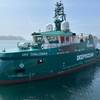Editorial: When Up is Down, is Down Up?
As editors, much of our time is spent reading and evaluating, examining a wealth of information to help us determine in which direction particular market segments are heading; trying to forecast “what's hot ... what's not.” Given that this is the Offshore Annual edition, much of my reading and discussions of late have centered on offshore oil and gas production, and the myriad of political and market forces that ultimately determine the "what," "where's," "when's" and "how much" of offshore drilling. My insightful conclusion: Throw all of the reports and data in a trusty centrifugal, give it a whirl, grab the third thing to fly out and you are just as likely to be on the mark.
Or not!
Notoriously cyclical, unpredictable and dependent on forces based solidly on economics and loosely on politics, the direction, near-term and far-forward outlook of the offshore drilling market can change depending on which "expert" opinion you solicit. Not a day goes by when there aren't reports in the U.S. of gasoline prices hitting historic new highs — months before the peak summer season — yet talk to a some rig and boat builders and you'd think that the oil majors will never drill for another drop in the oil patch. Pick up a copy of the NY Times — Wednesday, March 24, 2004, page C1, to be exact — and read about new technologies to drill deeper, and "with energy prices rising, investors are piling back in" to the offshore market; but read our own offshore market report in this edition (pg. 24), and you will see that "offshore drilling activity is expected to increase modestly." I offer no crystal ball-esque predictions on this page, but am compelled to point out the good news. The technologies to discover and recover energy products in increasingly deep waters are improving exponentially. The interest in gas ... with many new gas ship, terminal and technology projects booked and in the works ... continues to grow unabated. Oil and gas prices are soaring, and mixed with political instability in the world's main oil producing region and increasing energy demands from China, this is likely to continue. And last, but certainly not least, the most recent federal offshore lease sale in New Orleans attracted the largest number of bidders in more than five years.
P.S. All of you who know me well realize that it was particularly painful — as an Ohio State University alumnus — writing “The Future is Now” (pg. 30), the story about the students and winning ISODC project from the “school up North”. (Brutus Buckeye, pictured left)











